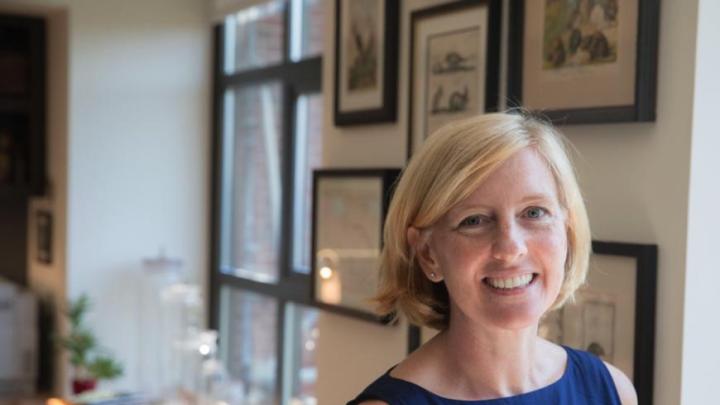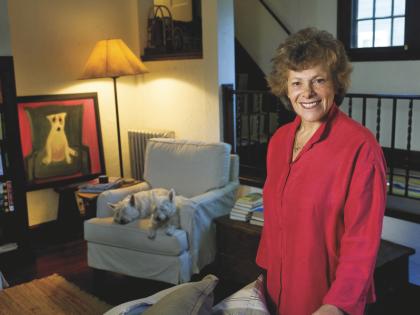Far from the fall-semester headlines about Harvard, the Faculty of Arts and Sciences (FAS) pursued ideas across its disciplines to spur intellectual growth, enhance research, and maximize effective use of resources—the final stage of the strategic planning launched by then-FAS dean Claudine Gay in 2021 (see harvardmag.com/fas-plans-21). That effort initially addressed FAS’s finances at a high level. During January conversations, the divisional deans reviewed ideas and recommendations now emerging from task forces focused on the faculty’s organization, addressing some of the frictions inherent in FAS’s highly decentralized structure.
The gradual accretion during many decades of departments, centers, and programs has made FAS complex to manage, costly to operate, and hard to navigate—and inhibits innovation. The reports being readied for consideration by Dean Hopi Hoekstra aim to address those issues. Though they were developed divisionally, the findings are meant to be applicable across FAS, refreshing its infrastructure in support of research and teaching.
• Intellectual innovation. Physicist and cosmologist Christopher W. Stubbs, dean of science through the spring term, has led an effort to identify what he called a “better way of focusing intellectual energies” on new fields for a set period, to determine their potential and longer-term place, if any, within FAS. “The primary organizational structure we have for both the teaching and the research components of Harvard’s academic mission” is the department, he noted—the locus for decisions about appointments and facilities, and the home to a discipline’s shared values. But departments are slow to change.
Finding a way to “understand some new intellectual activity that is not specifically aligned with departmental structures would be a nice idea,” he continued. Ideally, doing so would not require large initial fundraising, nor a new staff, space, or other dedicated overhead.
The proposed model is dubbed the “shared intellectual inquiry program” (SIIP). In recent years, FAS and other Harvard faculties have created initiatives in data science, inequality, quantum science and engineering, and other fields. Most begin with faculty members working together, finding funds to appoint some postdoctoral researchers, and adding current graduate students to the team. Stubbs envisions “a lot more transparency and structure” for such explorations. A faculty committee would vet proposals, taking into account curricular and research synergies, and recommend to the FAS dean which to support. A preestablished core staff and dedicated convening space would enable a quick start to the research. Importantly, support for each initiative would be time-limited, possibly in one or two renewable three-year increments.
The result, Stubbs hopes, will be a more intentional way of identifying FAS’s best bets on new fields of inquiry, with faster meaningful results—without running up unwanted fixed costs. He envisions applying this model across the faculty.
Given the plethora of existing units (11 departments and degree programs in social sciences, plus three thematic research centers, a museum, and 15 area research centers; 21 degree programs in arts and humanities, plus 16 centers, museums, and programs; and 10 departments versus twice that many centers, institutes, and museums in sciences)—a flexible, limited-duration means of intellectual experimentation seems warranted. There is “definitely an implied opportunity cost,” Stubbs acknowledged: several million dollars that could otherwise underwrite a few additional full-time professorships. But he will make the case for SIIP to Hoekstra before completing his term as science dean this semester.
• Dynamic academic communities. Robin Kelsey, the photography scholar who concludes his service as dean of arts and humanities this spring, embraces the appeal of that kind of experimentation. At FAS’s strategic planning retreat last August, he said, there was wide agreement that Harvard is “a place where it is so easy to create things and so hard to sunset or change them.” The arts and humanities structure, he noted, evolved from the late nineteenth century until 1968, when Visual and Environmental Studies became the most recent, and last, department created.
Those departments typically enjoy solid endowment funding. And to a large extent, Kelsey noted, “Our structure is built up around languages and literatures understood as mapped on to a cultural geography” (in fields such as Celtic, Near Eastern, or Slavic languages). Those departments can sustain their strengths and adapt contemporary approaches. But recent concentrations and secondary fields (ethnicity, migration, rights, for example, or theater, dance, and media), he said, are “more rickety and poorly resourced.” And emerging fields, especially those that relate to disciplines beyond FAS (like media studies, environmental humanities, and urban studies), “fit uncomfortably in arts and humanities” as it exists.
“To be responsible” to new interests, Kelsey continued, “we need to find a way to transform ourselves from within,” rather than adding more standing committees, secondary fields, and other degree programs that are deprived of resources. Halfway measures, he said, do not satisfy students’ educational goals and professors’ scholarly queries in the same way that fully departmental academic communities do, with broad course offerings, research opportunities, and peers.
No one wants the arts and humanities to be seen as “unresponsive” to or unsupportive of such growth, he said, lest Harvard “fail to capture the greatest thinking coming out of graduate schools around the country and world.” At risk is FAS’s ability to attract the best graduate students and to appoint the best scholars. Threading the needle between long-established academic communities and the new ones that ought to be in Cambridge will occupy the final months of his term as he refines recommendations with arts and sciences colleagues this spring.
• Centers and the academic mission. As Stubbs and colleagues explored ways to support innovation across FAS, and Kelsey’s group looks at how departments might adapt, government professor Lawrence Bobo, dean of social science, joked that he had an easier job. His working group focused on the relationships between departments and the associated academic centers—many of them with large staffs and budgets, research resources, and an interest in engaging in the world of scholarship far beyond Cambridge.
During FAS’s belt-tightening phase following the financial crisis and Great Recession beginning in 2008, administrators scoured center budgets for resources that might be available to support the core research and teaching mission. And during the pandemic, FAS strategic and financial planners were at pains to find out how centers were funded—and why they sometimes drew on the faculty’s unrestricted resources.
But Bobo’s group had a different goal, focusing on improved academic outcomes through clearer communications. First, he said, a “degree of frustration” had arisen in the relationship between centers (those focused on Africa, China, or the Middle East, for example) and departments, like economics or government, where contemporary scholarship no longer ties to specific geographies. That mismatch makes it harder to hire center staff directors, train leaders, and coordinate teaching and research support. Accordingly, beginning this spring, departments will share their annual plans (including for faculty searches and appointments) with the related centers, to bring the two sides into intellectual alignment.
Second, Bobo said, graduate students’ access to centers’ academic and financial resources (for research support) has varied widely. Students who worked closely with professors who were active in a center might be well positioned, but those who are “not very well wired” might miss good opportunities (not a trivial problem given the constraints on graduate student support; see “Graduate Gains” below). In response, Bobo’s group has directed a complete census of sources of such support within the centers; it will make that information readily accessible.
Finally, the center directors suggested that many faculty members “don’t fully appreciate the external profile and significance that the centers have in the broader real world,” he said. Now, the annual institute for newly appointed professors will cover the centers and their resources for faculty. As a pilot, he said, the division is even producing videos to give new members of the community “a flavor” of major centers’ work.
Limited in scope though these measures may be, Bobo said, they are part of FAS’s effort “collectively to take control of the fabric of our lives” as working scholars, within social science and across the other divisions. As Kelsey put it, the work of rubbing old habits and structures up against new opportunities for research and education turned out to be “an incredibly exciting intellectual processes”—the sort of plumbing that busy academics have been loath to do but from which they all may benefit.








